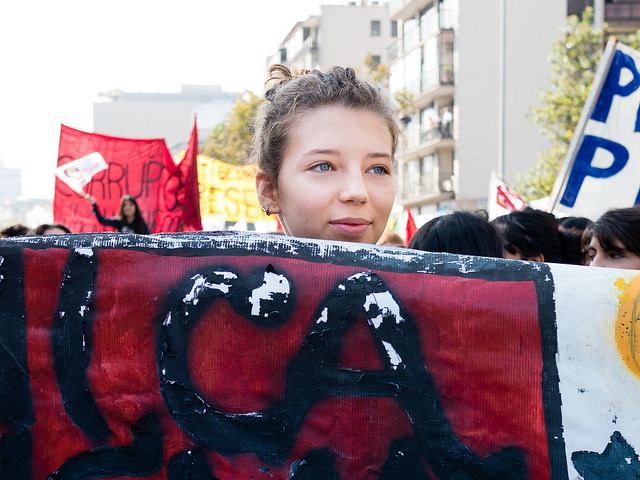Helping All Students Raise Their Voices in the New Year
Posted on January 10, 2018

"I was nobody, like a piece of sesame in a big pot of soup."
So says Wu Wenjian, describing his feelings as a nineteen-year-old cafeteria worker, watching the beginning of the student protests at Tiananmen Square in 1989. Intimidated by the students, many of whom hailed from China's elite, but also terrified of what the government might do to them, he felt small and powerless.
Yet, when government troops began shooting at protesters, Wu Wenjian climbed atop a scaffold and gave an impromptu speech denouncing the violence. For this, he was sentenced to seven years in prison, but neither this imprisonment nor the government's whitewashing of the history of Tiananmen could silence his voice: he now creates paintings memorializing the protests.
Wu Wenjian was not a public figure, not highly educated, not deeply confident – however, when he witnessed injustice, he raised his voice. His story can provide students with a relateable model of speaking out, to go alongside the more familiar tales of giants like Martin Luther King Jr. and Abraham Lincoln. Social movements for equity and justice are driven by the voices of ordinary and imperfect people.
Wu Wenjian and other world voices demonstrate that there are many ways of speaking one's truth, from comics that circulated during the Egyptian Revolution of 2011, to the novelistic oral histories of Nobel laureate Svetlana Alexeivich, to translations of banned authors into other languages, to poetry protesting and satirizing Mexico's drug wars. In these texts, students will find both "mirrors and windows," with some authors who share their cultural backgrounds, and others who introduce them to new cultures and modes of expression.
It is also powerful for students to hear local stories of voice, from teachers, family members, or people in the community. You might tell your own story of speaking out and facing obstacles, or have students conduct oral history interviews on the topic. (For tips on teaching oral history, see the Playlist of the Wu Wenjian interview.)
As students hear these stories, help them move from awareness to understanding to action. For example, a student might first encounter a social issue through a text on WWB Campus, learn more about the issue from contextual materials, and, finally, explore ways in which to make a difference in a class discussion, or by using a website such as dosomething.org.
How do you help students raise their voices? Who inspires you to speak out? Let us know on Facebook or the Contact page.



